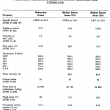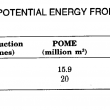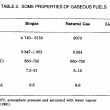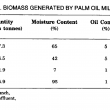Journal of Oil Palm Research Vol. 6 No. 2 1994 Dec, p. 138-146
RENEWABLE ENERGY FROM THE PALM OIL INDUSTRY
Received: 11 February 1994 Accepted: 20 June 1994
Palm oil mills produce crude palm oil and palm kernel or crude palm kernel oil as their main products. Considerable amounts of co-products, such as fibre (from the mesocarp), shell (from around the kernel), empty fruit bunehes and palm oil mill effluent are also generated by the milling process.
Fibre and shell are the main energy sources for the palm oil mills. In 1992, fibre and shell generated about 650 million kWh to meet the energy demand of 265 palm oil mills in the country. This amounted to 2%-3% of the national energy consumption.
Other co-products like empty ftuit bunches and biogas are very much under-utilized as energy resources. They have the potential of generating 1131 million kWh of electricity which is about 5% of the national energy demand.
Palm oil methyl esters and crude palm oil are being evaluated as diesel substitutes. The palm oil methyl ester mixture (palm diesel) is being run in unmodified diesel engines. So far it has passed all the tests as a diesel substitute in exhaustive field trials. Very positive results have been obtained in terms of engine wear and tear, and reduction in dark smoke, CO, CO2 and SO2 in the exhaust emission. Crude palm oil is run in modified diesel (Elsbett) engines. Its performance is being evaluated.
This paper discusses the potential energy available from the above-mentioned products and co-products from palm oil mills.
KEYWORDS:FIGURES & TABLES:
* Palm Oil Research Institute of Malaysia,
P.O. Box 10620, 50720 Kuala Lumpur, Malaysia.
Paper presented at Energy REDC Forum
26-27 November 1993, Langkawi, Malaysia




